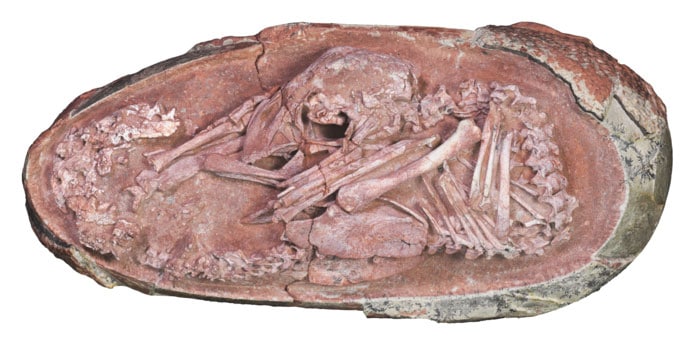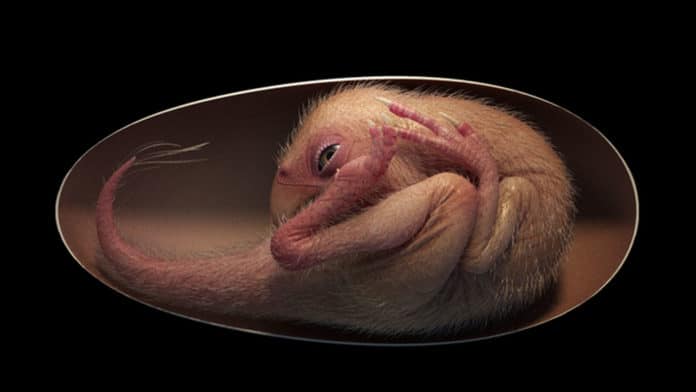Despite discovering many dinosaur eggs and nests over the past 100 years, articulated in-ovo embryos are remarkably rare. Scientists reported an exceptionally preserved dinosaur embryo in southern China in a new study.
They discovered fossilized dinosaur embryos in Ganzhou, Jiangxi Province, southern China.
The oviraptorosaurs took on a distinctive tucking posture before they hatched. This behavior is considered unique to birds, suggesting that tucking behavior may have evolved first among non-avian theropods during the Cretaceous.
Liang Liu, director of a company called Yingliang Group, acquired the fossil in 2000. Liu suspected that the fossil might contain egg fossils. But it ended up in storage, largely forgotten until about ten years later when museum staff during the construction of Yingliang Stone Nature History Museum sorted through the boxes and unearthed the fossils.
The staff identified them as dinosaur eggs. They noticed some bones on the broken cross-section of one of the eggs.
Scientists then prepared the fossils, unveiling the embryo hidden within, named ‘Baby Yingliang.’
Waisum Ma (@FionMaWS) of the University of Birmingham, U.K., said, “Most known non-avian dinosaur embryos are incomplete with skeletons disarticulated. We were surprised to see this embryo beautifully preserved inside a dinosaur egg, lying in a bird-like posture. This posture had not been recognized in non-avian dinosaurs before.”
The head of this exceptionally preserved, articulated oviraptorid embryo lies ventral to the body, with the feet on either side. The back curled along the blunt pole of the egg, in a posture previously unrecognized in a non-avian dinosaur but reminiscent of a late-stage modern bird embryo.

Scientists noted, “Comparison of the specimen to other late-stage oviraptorosaur embryos suggests that before hatching, oviraptorosaurs developed avian-like postures late in their incubation. In modern birds, such coordinated embryonic movements are associated with tucking, a behavior that’s controlled by the central nervous system and is critical for hatching success.”
“The notion that such prehatching behavior may have originated among non-avian theropods can now be further investigated through more studies of other fossil embryos.”
At first, scientists need to study this rare specimen in even more depth using several imaging techniques to image its internal anatomy.
Journal Reference:
- Lida Xing et al. An exquisitely preserved in-ovo theropod dinosaur embryo sheds light on avian-like prehatching postures. DOI: 10.1016/j.isci.2021.103516
